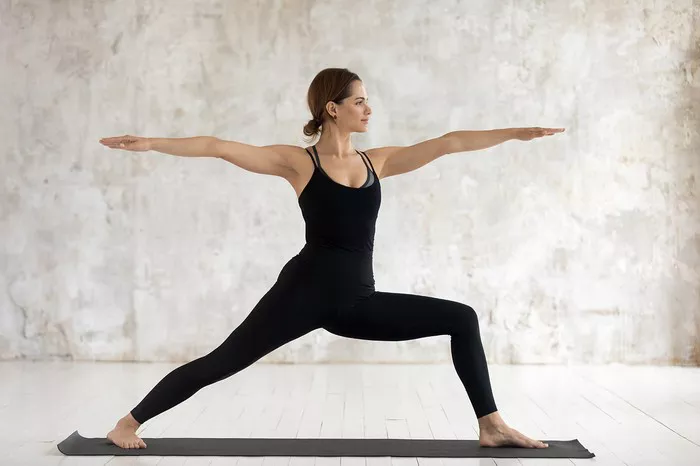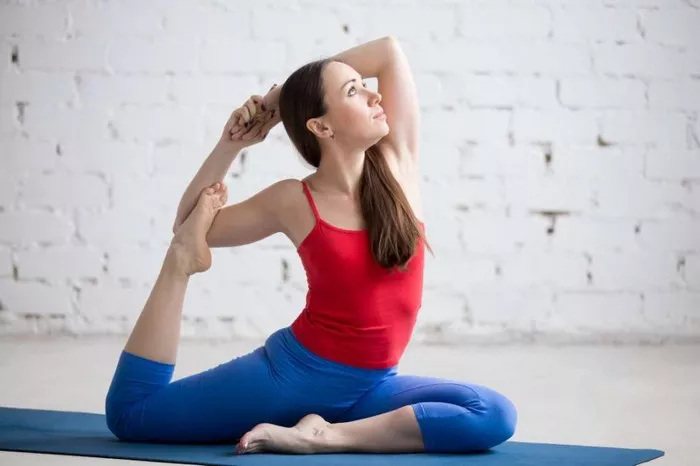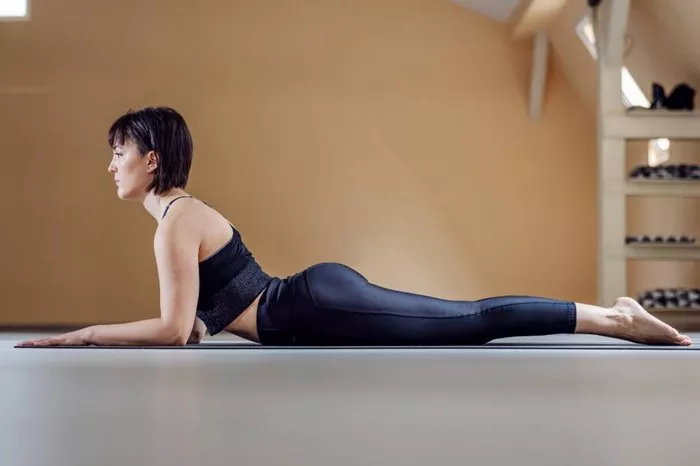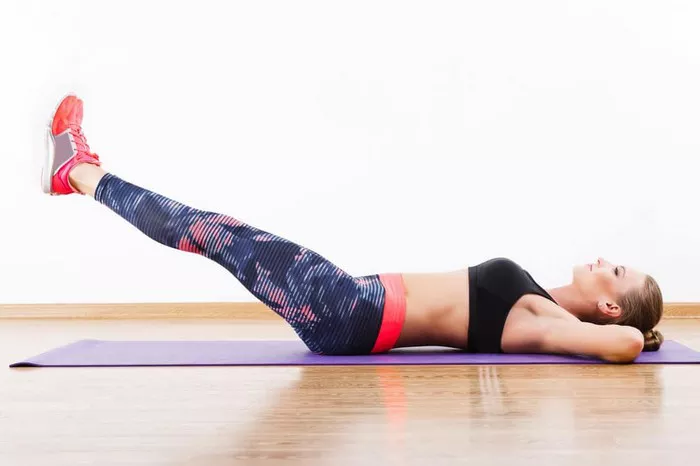Yoga is a practice that has been around for centuries, known for its ability to promote physical and mental well-being through a series of postures and breathing exercises. For beginners, starting with simple yoga poses can provide a foundation for building strength, flexibility, and inner peace. Whether you’re looking to reduce stress, increase flexibility, or improve your overall fitness level, these ten poses are a great place to start.
1. Mountain Pose (Tadasana)
Mountain Pose is the foundational pose for all standing yoga postures. It improves posture, balance, and focus.
How to do it:
- Stand with your feet together or hip-width apart, arms at your sides.
- Press down through your feet, engage your thigh muscles, and lift your kneecaps.
- Lengthen your tailbone toward the floor and lift your chest.
- Roll your shoulders back and down, and extend your arms alongside your body with palms facing forward.
- Gaze straight ahead and breathe deeply for 30 seconds to 1 minute.
2. Downward-Facing Dog (Adho Mukha Svanasana)
Downward-Facing Dog is a rejuvenating pose that stretches the entire body, especially the hamstrings, calves, and shoulders.
How to do it:
- Start on your hands and knees, wrists under shoulders and knees under hips.
- Spread your fingers wide and press firmly into the mat.
- Exhale and lift your knees away from the floor, keeping them slightly bent.
- Lift your hips toward the ceiling, forming an inverted V-shape with your body.
- Press your heels toward the floor and lengthen your spine.
- Hold for 30 seconds to 1 minute while breathing deeply.
3. Child’s Pose (Balasana)
Child’s Pose is a resting pose that stretches the back, hips, thighs, and ankles, and helps to relieve stress and fatigue.
How to do it:
- Kneel on the mat, big toes together, and sit on your heels.
- Separate your knees about hip-width apart.
- Exhale and fold forward, laying your torso between your thighs.
- Extend your arms in front of you or alongside your body with palms facing up.
- Relax your forehead on the mat and breathe deeply for 1 to 3 minutes.
4. Tree Pose (Vrikshasana)
Tree Pose improves balance, strengthens the legs, and increases concentration and focus.
How to do it:
- Stand tall with feet together and arms at your sides (Mountain Pose).
- Shift your weight onto your left foot and bend your right knee.
- Reach down and clasp your right ankle.
- Place the sole of your right foot on the inside of your left thigh or calf (avoid the knee).
- Press your foot into your leg and your leg back into your foot.
- Bring your palms together in front of your chest or extend your arms overhead.
- Hold for 30 seconds to 1 minute and switch sides.
5. Cat-Cow Pose (Marjaryasana-Bitilasana)
Cat-Cow Pose is a gentle flow between two poses that warms the spine and stretches the back, torso, and neck.
How to do it:
- Start on your hands and knees, wrists under shoulders and knees under hips.
- Inhale and arch your back, lowering your belly toward the floor, lifting your tailbone and head (Cow Pose).
- Exhale and round your spine toward the ceiling, tucking your chin to your chest (Cat Pose).
- Flow between Cat and Cow Poses for 1 to 2 minutes, coordinating movement with breath.
6. Warrior II Pose (Virabhadrasana II)
Warrior II Pose strengthens the legs and arms, improves balance, and increases stamina and concentration.
How to do it:
- Stand with feet wide apart (about 3 to 4 feet), arms at your sides.
- Turn your right foot out 90 degrees and your left foot slightly inward.
- Bend your right knee over your right ankle, thigh parallel to the floor.
- Extend your arms to the sides at shoulder height, palms facing down.
- Gaze over your right fingertips and hold for 30 seconds to 1 minute.
- Repeat on the opposite side.
7. Bridge Pose (Setu Bandhasana)
Bridge Pose strengthens the back, glutes, and hamstrings, stretches the chest, and improves spinal flexibility.
How to do it:
- Lie on your back with knees bent and feet hip-width apart, arms alongside your body with palms facing down.
- Press your feet and arms into the mat as you lift your hips toward the ceiling.
- Keep your thighs and feet parallel, and interlace your fingers under your back, extending through your arms.
- Hold for 30 seconds to 1 minute, breathing deeply.
8. Seated Forward Bend (Paschimottanasana)
Seated Forward Bend stretches the spine, hamstrings, and shoulders, calms the mind, and improves digestion.
How to do it:
- Sit on the mat with legs extended in front of you, feet flexed.
- Inhale and lengthen your spine.
- Exhale and hinge at your hips, reaching toward your feet with your hands.
- Hold onto your shins, ankles, or feet, depending on flexibility.
- Keep your back straight and gently fold forward with each exhale.
- Hold for 30 seconds to 1 minute, breathing deeply.
9. Cobra Pose (Bhujangasana)
Cobra Pose strengthens the spine, arms, and shoulders, improves posture, and stimulates abdominal organs.
How to do it:
- Lie on your belly with legs extended, feet together, and palms under your shoulders.
- Press the tops of your feet and thighs into the mat.
- Inhale and lift your chest off the floor, straightening your arms (keep elbows slightly bent).
- Roll your shoulders back and lift your gaze upward, lengthening your neck.
- Hold for 15 to 30 seconds, breathing deeply.
10. Corpse Pose (Savasana)
Corpse Pose is a relaxation pose that rejuvenates the body and mind, reduces stress, and promotes deep relaxation.
How to do it:
- Lie on your back with legs extended and arms at your sides, palms facing up.
- Close your eyes and allow your body to relax completely.
- Release any tension in your muscles and focus on your breath.
- Remain in Savasana for 5 to 10 minutes, or longer if desired, breathing naturally.
See Also: 15 Desk Yoga Poses You Can Do at Your Desk
Conclusion
Practicing these ten simple yoga poses regularly can enhance your overall well-being by improving flexibility, strength, balance, and mental clarity. Remember to listen to your body and modify poses as needed to suit your individual level of comfort and flexibility. With consistent practice, you’ll gradually experience the transformative benefits of yoga in your daily life. Whether you’re a beginner or an experienced yogi, integrating these foundational poses into your routine will support your journey toward a healthier, more balanced lifestyle.






















